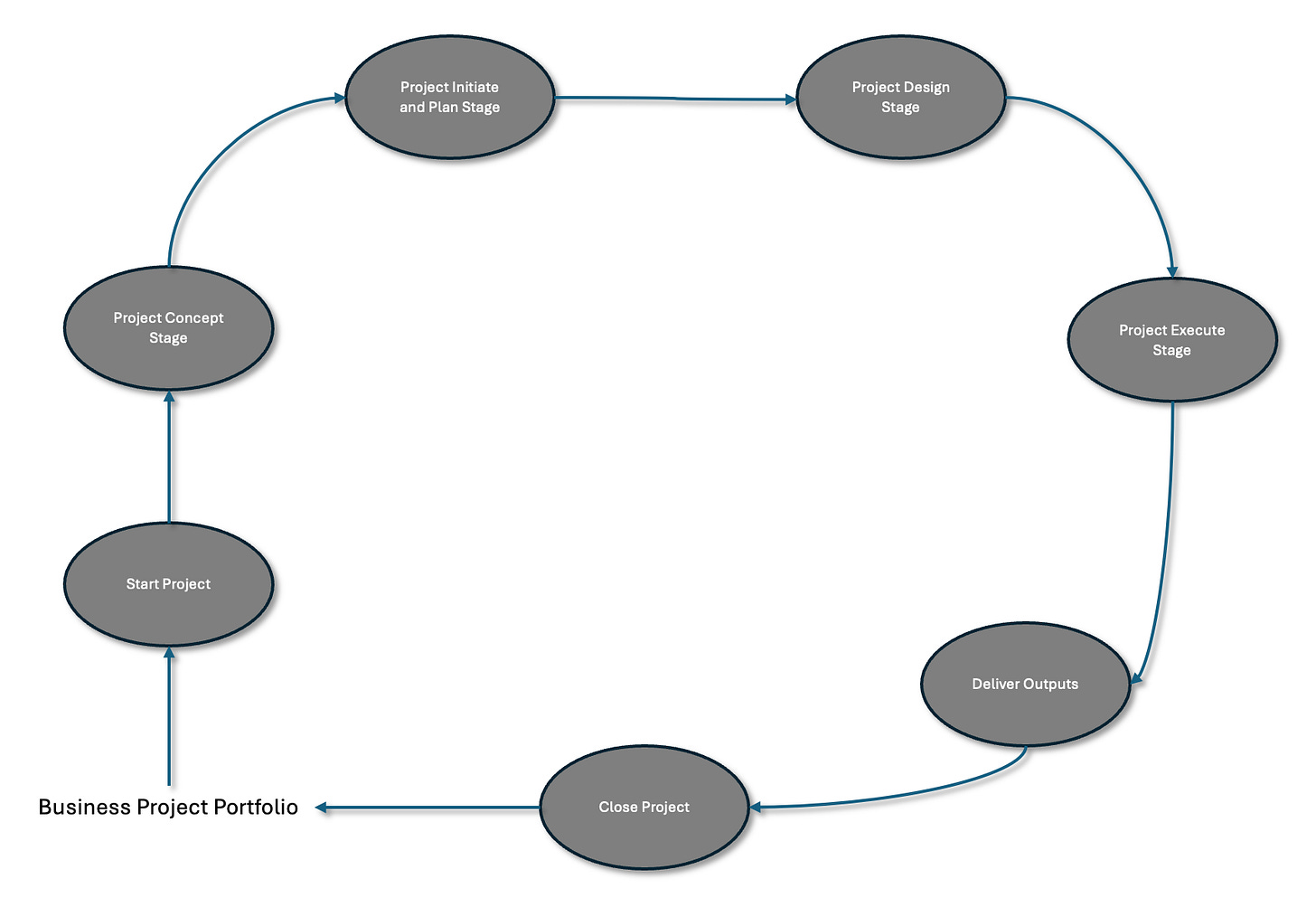Decoding How Strategy Becomes Reality in Your Business & Exploring how Strategy Works by Aligning Projects with Strategic Intent.
Projects don't exist in isolation. Each project should ultimately contribute to the company strategy and that company strategy, should result in the business, winning in the marketplace.
How a simplified project strategy looks.
Strategic Objectives (Of which a company will typically have more than one)
These can be both measurable (20% marketshare) and non measurable such as Fostering a culture of innovation.
They are the high level company objectives you are seeking to attain, and by attaining these objectives, you believe your company will be successful in the marketplace.
Strategic Key Results (Final Benefit Outcomes)
These strategic outcomes are measurable. And are proper SMART key results. ie - Increase in new customers by 10% by year 1 and 40% by year 3.
Activities (Projects or Programmes)
The Project(s) or programmes that we are going to do that are focused around achieving our Final Benefit Outcomes.
At this stage, this is high level. For example, creating an omnichannel for customers to manage their purchasing through may require multiple projects and benefit outcomes in order to achieve the final benefit outcome.

Overview of how Strategy results in Projects.
It helps to visually diagram processes at an overview level so you can see the big picture before we delve deeper into how strategy and benefits are linked to projects.
This diagram shows how to bring strategic objectives into Projects that deliver Business Unit Benefit Outcomes that directly contribute to the Strategic Key Results (Ultimate Benefit Outcomes) that result in the successful execution of company strategy.
We can see from the first diagram that Strategic Objectives have Strategic Benefit Outcomes that are required to be met in order to achieve a Strategic Objective. In order for Strategic Benefit Outcomes to be achieved, Strategic Change Outcomes must be achieved. To make Strategic Change Outcomes happen requires high level capability initiatives.
Those High level capability initiatives are what drive the Programmes and Projects that the company will run. The Projects have Capability Work required that creates Business Unit Change Outcomes that have Business Unit Benefit outcomes that roll up into Strategic Benefit Outcomes. (Business unit benefit outcomes may be more sales, less cost, reduction in future headcount etc)
It may require one or more Projects/Programmes in order to achieve Strategic Key Results and it may require One or more Strategic Key Results to achieve a company Strategic Objective.
Some Strategic Change Outcomes will have overlapping Strategic Key Results and it will be up to you to use discernment to understand if they are co-contributors or claiming more than they can deliver.
Strategy Flow that Informs the Business Project Portfolio.
This diagram shows how each component contributes to each other, and also informs what the Business Project Portfolio will look like.
Vision: A vision statement outlines the desired future state or long-term aspirations of an organisation. It’s an inspirational description of what the organisation hopes to achieve or become in the future.
The vision provides the overarching goal that project investements should ultimately contribute to. When planning projects, the vision helps ensure that the selected investments align with the long-term aspirations of the business.
Mission: A mission statement defines the organisations purpose, core values, and primary objectives. It answers the question of why the organisation exists and what it does to achieve its vision.
The mission informs the criteria for selecting projects, ensuring that they align with the organisation’s current purpose and operational focus. It serves as a foundation for justifying why certain projects are undertaken and how they support the organisation’s immediate objectives.
Strategic Objectives: Strategic objectives are goals that an organisation aims to achieve in alignment with its overall mission and vision. They are the “What” that an organisation seeks to accomplish.
In project investment planning, strategic objectives guide the selection of projects and investments. Projects are chosen based on how well they align with these objectives. Strategic Objectives that do not align with the Business Vision are not pursued.
Strategies: Strategies are the plans or approaches an organisation adopts to achieve its strategic objectives. They are the “how” that explains the means by which the objectives will be reached.
The strategies define how the selected projects and investments will be executed. They involve planning how resources will be used, what technologies will be implemented, and how risks will be managed to achieve the strategic objectives etc.
The Business Project Portfolio
This wrapper depicts how each part of the business portfolio planning contributes to the various benefit flow charts that are utilised to define in detail how projects will ultimately contribute to the company strategic objectives. Ultimately the prioritisation and selection of the portfolio of company projects results in the initiation of the projects wrapper as projects are begun.
The Projects Wrapper
The Projects Wrapper is loosely aligned to common project management methodologies and should be adjusted to meet how your business does projects. The outcome however is the same.
The Business Project Portfolio informs the team what projects to initiate and then the feedback from the benefit outcomes of those projects once executed, inform the Business Project Portfolio and Strategic Key Results. This closes the loop, ensuring that the outcomes from projects are measured and those measured outcomes are applied to the strategic key results appropriately.
By measuring the outcomes and feeding them back into the Strategic Key Results, you can begin to get a picture of how well your business is doing in it’s quest to fulfil its ultimate Strategic Objectives.
Conclusion
By setting up your company strategy and projects to be in alignment, you can show how you are helping the business be competitive in the marketplace and ultimately measure what the outcomes of that are.







